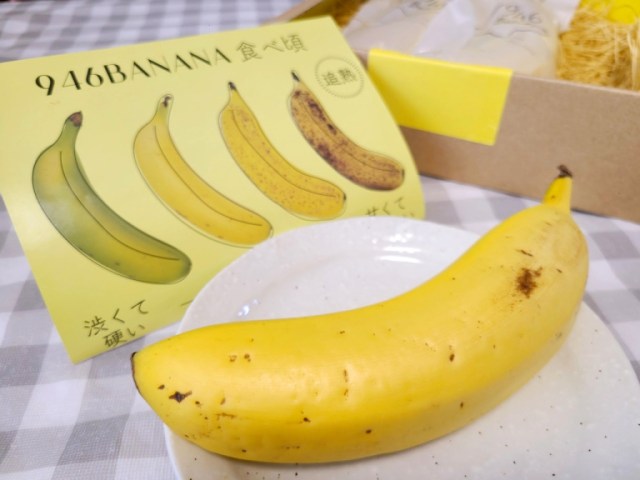
Tropical fruit from Japan’s frosty north.
Bananas aren’t rare in Japan, in the sense that you can find them in any supermarket and also just about any home, as they’re one of the most commonly eaten fruits in the country. However, bananas in Japan are super-rare in the sense that 99.98 percent of the bananas that people eat in Japan are imported.
That statistic means, though, that 0.02 percent of Japan’s bananas are domestically grown, and we were pretty shocked to learn that some of those 0.02 percent come from Hokkaido.
▼ Hokkaido
Yes, Hokkaido. Japan’s northernmost prefecture, which spends winter under a blanket of snow, and has the lowest temperature and humidity of anywhere in Japan throughout the year. But they really do grow bananas in the Hokkaido town of Kushiro, and we decided to see what they taste like.
As you might suspect, though, they don’t come cheap. Called 946 Bananas (the digits can also be read as “Kushiro” in Japanese), the price for one is 1,080 yen (US$10.40), about 20 times what an imported banana will cost you at a Japanese grocery store. Oh, and if you splurge for the box set of three bananas like we did? That’ll set you back 4,860 yen (US$50).
You do get a nice box, though, with individually wrapped bananas nestled in packing straw. The wrappers also have air holes, so that the bananas can continue to ripen during shipping.
We unwrapped one, and the first thing that struck us was the size, as the 946 Bananas are especially large.
▼ Imported supermarket banana (top) vs. 946 Banana (bottom)
But we’re not Victorian-era aristocrats buying tropical fruit for decorative purposes. Food is for feasting, and it was time to dig in!
The 946 Banana immediately makes its presence felt on your taste buds. Grown with no pesticides or chemical fertilizers, they have a powerful, but not overpowering, sweetness, which the farmers attribute to the large gap between the high and low temperatures in Kushiro. Moist and rich, our taste-testing reporter Maro was fully satisfied with the fruit.
It’s not just their region of origin that makes the 946 Bananas unique, either. They also have remarkably thin peels, so thin that you can eat them!
Just because you can, though, doesn’t necessarily mean you’ll want to, at least not raw, as Maro took a bite and found the peel to be pretty bitter. However, the peel is supposedly highly nutritious, and 946 Bananas distributor recommends leaving its bananas unpeeled if you’re tossing them in a blender to make a smoothie, or even slicing and sautéing the peels in a manner like the traditional Japanese vegetable dish kinpira gobo.
946 Bananas can be purchased through their online shop here.
Top image: SoraNews24
Insert images: SoraNews24, 946 Banana
● Want to hear about SoraNews24’s latest articles as soon as they’re published? Follow us on Facebook and Twitter!
[ Read in Japanese ]

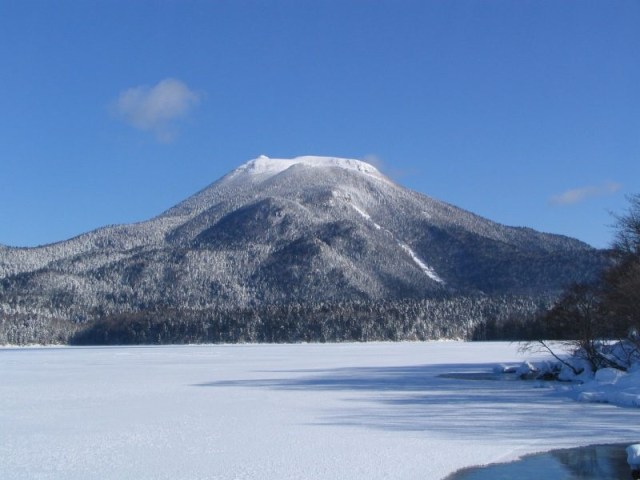
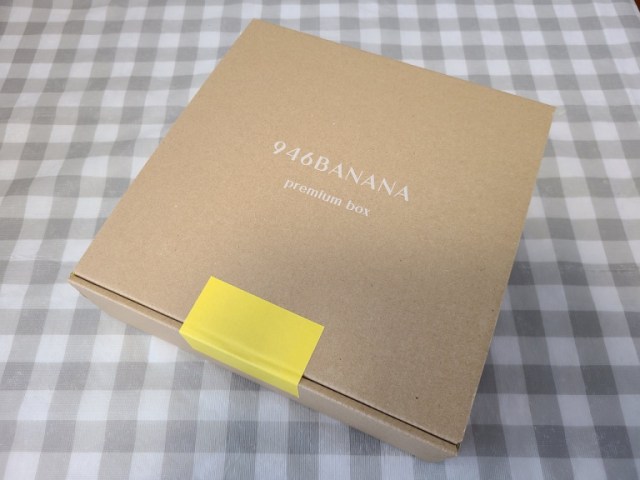
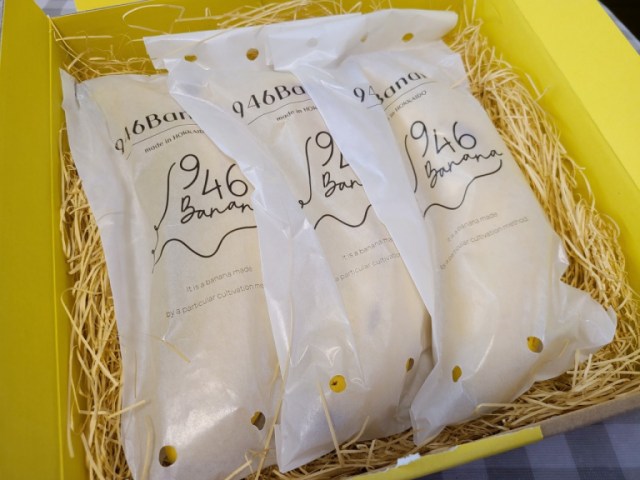
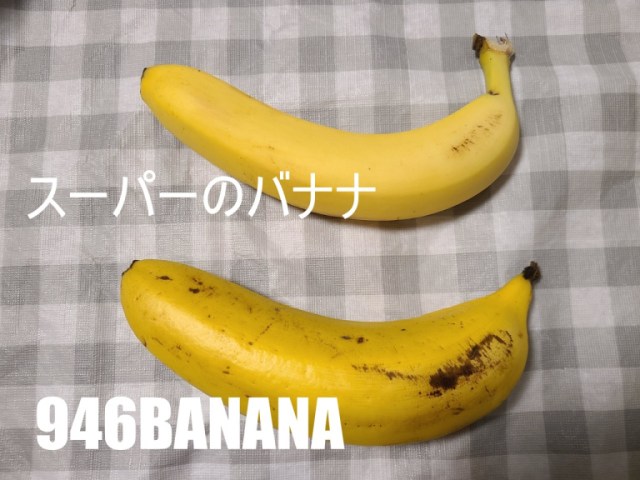
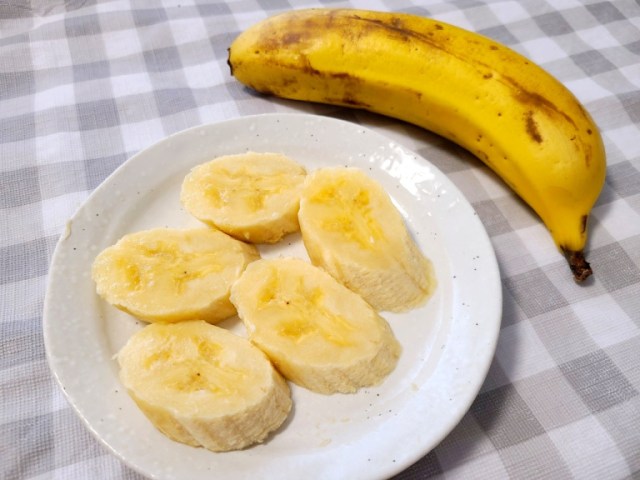
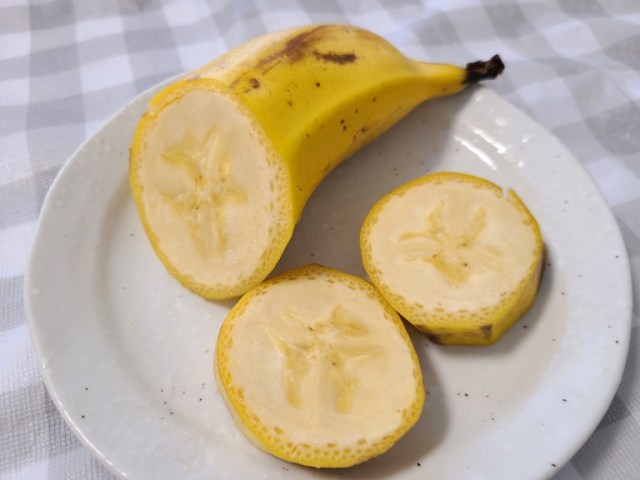
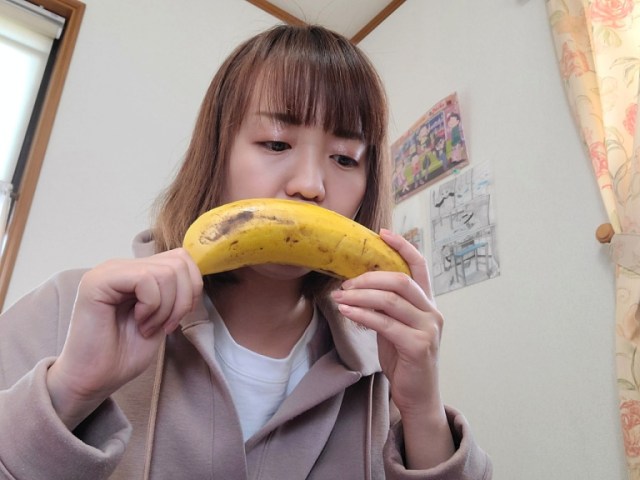

 This super-rare Japanese banana has edible skin!【Taste test】
This super-rare Japanese banana has edible skin!【Taste test】 We try a Le Lectier, the highest-quality European pear available in Japan【Taste Test】
We try a Le Lectier, the highest-quality European pear available in Japan【Taste Test】 Mr. Sato eats banana flower, still isn’t sure what it tastes like, loves it anyway【SoraKitchen】
Mr. Sato eats banana flower, still isn’t sure what it tastes like, loves it anyway【SoraKitchen】 McDonald’s Japan’s Asian Sweets almond tofu McFlurry and new apple pie are here!【Taste test】
McDonald’s Japan’s Asian Sweets almond tofu McFlurry and new apple pie are here!【Taste test】 We go bananas for Starbucks Japan’s new bananas range
We go bananas for Starbucks Japan’s new bananas range Japan may add Japanese language proficiency, lifestyle classes to permanent foreign resident requirements
Japan may add Japanese language proficiency, lifestyle classes to permanent foreign resident requirements Lacquerware supplier to emperor of Japan and Pokémon team up for new tableware
Lacquerware supplier to emperor of Japan and Pokémon team up for new tableware Starbucks Japan releases new zodiac chilled cup drink for 2026
Starbucks Japan releases new zodiac chilled cup drink for 2026 Disillusionment at Tsukiji’s tourist-target prices led us to a great ramen restaurant in Tokyo
Disillusionment at Tsukiji’s tourist-target prices led us to a great ramen restaurant in Tokyo Merry Christmas from SoraNews24!
Merry Christmas from SoraNews24!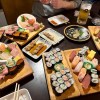 Shinjuku izakaya’s all-you-can-eat-and-drink plan is one of Tokyo’s best secret cheap eats
Shinjuku izakaya’s all-you-can-eat-and-drink plan is one of Tokyo’s best secret cheap eats Start saving room now – Japanese grocery store’s biggest sushi roll yet is coming for Setsubun
Start saving room now – Japanese grocery store’s biggest sushi roll yet is coming for Setsubun 7-Eleven Japan starts new temporary luggage storage service in over 300 branches
7-Eleven Japan starts new temporary luggage storage service in over 300 branches Japan’s first hotel with a human washing machine is now ready for you to come and bathe in it
Japan’s first hotel with a human washing machine is now ready for you to come and bathe in it How to get your money’s worth at an all-you-can-eat crepe challenge in Japan
How to get your money’s worth at an all-you-can-eat crepe challenge in Japan Starbucks teams up with 166-year-old Kyoto doll maker for Year of the Horse decorations【Photos】
Starbucks teams up with 166-year-old Kyoto doll maker for Year of the Horse decorations【Photos】 Tokyo’s Tsukiji sushi neighborhood asks tour groups to stay away for the rest of the month
Tokyo’s Tsukiji sushi neighborhood asks tour groups to stay away for the rest of the month Street Fighter Hadouken Churros to be launched and eaten in Tokyo, Okami pudding on offer too
Street Fighter Hadouken Churros to be launched and eaten in Tokyo, Okami pudding on offer too Is this the most relaxing Starbucks in Japan?
Is this the most relaxing Starbucks in Japan? Starbucks on a Shinkansen bullet train platform: 6 tips for using the automated store in Japan
Starbucks on a Shinkansen bullet train platform: 6 tips for using the automated store in Japan Large amount of supposed human organs left in Osaka marketplace
Large amount of supposed human organs left in Osaka marketplace Japan’s human washing machines will go on sale to general public, demos to be held in Tokyo
Japan’s human washing machines will go on sale to general public, demos to be held in Tokyo Japanese train company is letting fans buy its actual ticket gates for their homes
Japanese train company is letting fans buy its actual ticket gates for their homes Tokyo considering law requiring more trash cans following litter increase in heavily touristed area
Tokyo considering law requiring more trash cans following litter increase in heavily touristed area Is China’s don’t-go-to-Japan warning affecting tourist crowds in Tokyo’s Asakusa neighborhood?
Is China’s don’t-go-to-Japan warning affecting tourist crowds in Tokyo’s Asakusa neighborhood? Nintendo’s Kirby now delivering orders at Kura Sushi restaurants, but not in Japan
Nintendo’s Kirby now delivering orders at Kura Sushi restaurants, but not in Japan Tokyo event lets you travel back in time, for free, to celebrate 100 years since Showa era start
Tokyo event lets you travel back in time, for free, to celebrate 100 years since Showa era start Survey asks foreign tourists what bothered them in Japan, more than half gave same answer
Survey asks foreign tourists what bothered them in Japan, more than half gave same answer Japan’s deadliest food claims more victims, but why do people keep eating it for New Year’s?
Japan’s deadliest food claims more victims, but why do people keep eating it for New Year’s? We deeply regret going into this tunnel on our walk in the mountains of Japan
We deeply regret going into this tunnel on our walk in the mountains of Japan Studio Ghibli releases Kodama forest spirits from Princess Mononoke to light up your home
Studio Ghibli releases Kodama forest spirits from Princess Mononoke to light up your home Major Japanese hotel chain says reservations via overseas booking sites may not be valid
Major Japanese hotel chain says reservations via overseas booking sites may not be valid Put sesame oil in your coffee? Japanese maker says it’s the best way to start your day【Taste test】
Put sesame oil in your coffee? Japanese maker says it’s the best way to start your day【Taste test】 The top 10 annoying foreign tourist behaviors on trains, as chosen by Japanese people【Survey】
The top 10 annoying foreign tourist behaviors on trains, as chosen by Japanese people【Survey】 No more using real katana for tourism activities, Japan’s National Police Agency says
No more using real katana for tourism activities, Japan’s National Police Agency says Starbucks Japan reveals new sakura drinkware collection, inspired by evening cherry blossoms
Starbucks Japan reveals new sakura drinkware collection, inspired by evening cherry blossoms Do expensive 10,000 yen Japanese cherries taste better than cheap ones from the supermarket?
Do expensive 10,000 yen Japanese cherries taste better than cheap ones from the supermarket? Taste-testing Japan’s crazy-expensive 3,240-yen (US$29) persimmon
Taste-testing Japan’s crazy-expensive 3,240-yen (US$29) persimmon The Fuwatoro Yamaimo Teppan just might be 7-Eleven Japan’s dish of the year【Taste test】
The Fuwatoro Yamaimo Teppan just might be 7-Eleven Japan’s dish of the year【Taste test】 Starbucks Japan adds a Banana Brulee Frappuccino to the menu, with a bunch of new treats as well
Starbucks Japan adds a Banana Brulee Frappuccino to the menu, with a bunch of new treats as well Kandaba, moui, and sakuna: We have fun taste-testing Okinawan fruits and vegetables
Kandaba, moui, and sakuna: We have fun taste-testing Okinawan fruits and vegetables The most expensive natto in Japan – Eating the “black diamonds” of Tanba Kuro【Taste test】
The most expensive natto in Japan – Eating the “black diamonds” of Tanba Kuro【Taste test】 Unusual Japanese ice creams take your taste buds on a trip around Japan
Unusual Japanese ice creams take your taste buds on a trip around Japan Don’t forget that the best convenience store in northern Japan has branches farther south too
Don’t forget that the best convenience store in northern Japan has branches farther south too Is Japan’s new pain-in-the-butt instant ramen also a joy in the stomach?【Taste test】
Is Japan’s new pain-in-the-butt instant ramen also a joy in the stomach?【Taste test】 7-Eleven now has make-it-yourself smoothies in Japan, and they’re amazing
7-Eleven now has make-it-yourself smoothies in Japan, and they’re amazing Do Hi-Chew-flavor Hi-Chews have a reason to exist?【Taste test】
Do Hi-Chew-flavor Hi-Chews have a reason to exist?【Taste test】 7-Eleven Japan’s new acai smoothie becomes a hit with customers
7-Eleven Japan’s new acai smoothie becomes a hit with customers We try the latest crazy chip flavour from Japan: Strawberry shortcake 【Taste test】
We try the latest crazy chip flavour from Japan: Strawberry shortcake 【Taste test】 We try “the worst-tasting ramen in Japan” – How bad could it be?【Taste test】
We try “the worst-tasting ramen in Japan” – How bad could it be?【Taste test】 How to make Starbucks Japan’s new Watermelon Frappuccino taste even more watermelony
How to make Starbucks Japan’s new Watermelon Frappuccino taste even more watermelony Can we pick out the expensive Japanese grapes in a blind taste test?
Can we pick out the expensive Japanese grapes in a blind taste test?
Leave a Reply